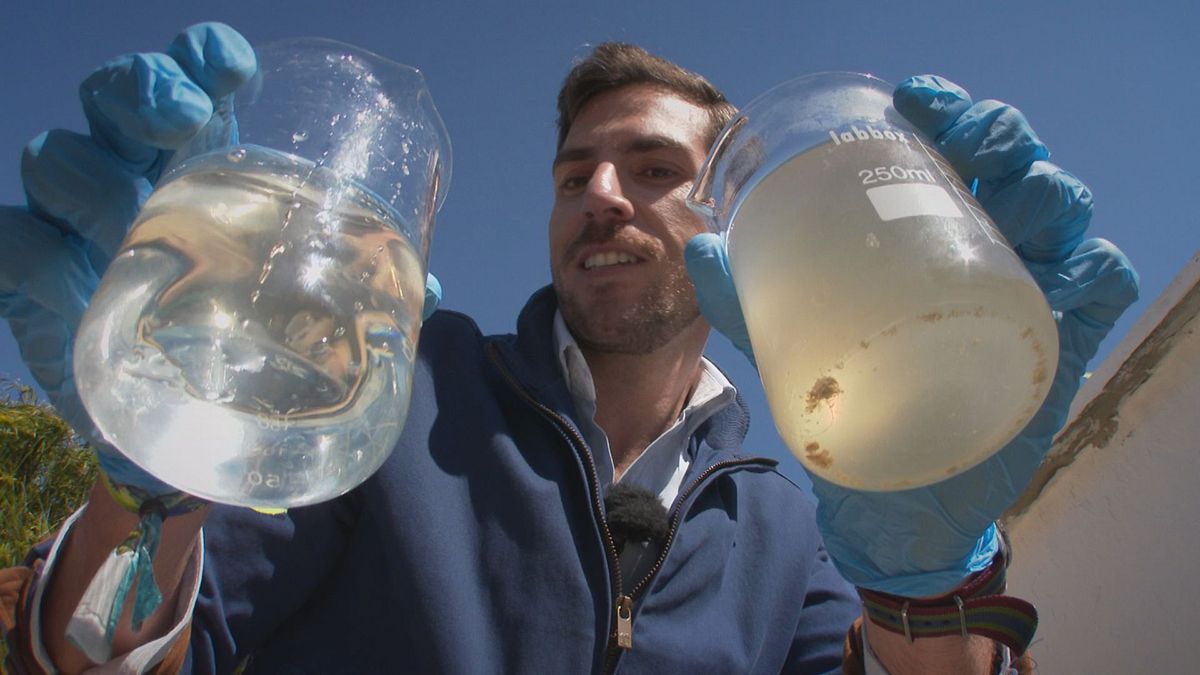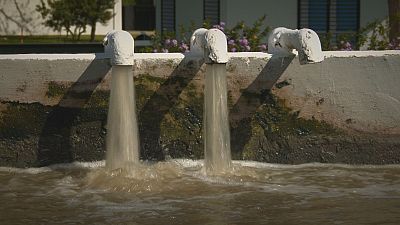Harnessing bacteria that produce electricity and break down organic waste, a European research project is developing a new, environmentally friendly way to purify sewage water in small communities.
Harnessing bacteria that produce electricity and break down organic waste, a European research project is developing a new, environmentally friendly way to purify sewage water in small communities.
It may look like a park, but an experimental plant in Carrión de los Céspedes, near Seville, is full of wastewater from the nearby town. Yet the air doesn’t smell like sewage. The water is purified the natural way, by underground microorganisms – a traditional method improved with the latest research.
Researchers on the iMETland project use bacteria that produce electricity when breaking down organic waste.
Some microbes indeed grow little electricity-conducting wires, which act as a kind of snorkel, allowing the bacteria to penetrate deeper into sediment, where they can use this electrochemical process to survive where there is no oxygen.
These so-called electroactive bacteria can purify water up to ten times faster than conventional methods. That’s why, instead of gravel, the experimental wetland is filled with conductive material. It acts as a physical support, and at the same time accelerates the metabolic processes that purify water.
“The result is clean water, with zero energy cost and no residual pollution,” says Abraham Esteve-Núñez, researcher in environmental biotechnology at IMDEA AGUA and iMETland project coordinator.
Zero-energy project
Here’s how it works: The wastewater from the nearby town is collected in a septic tank. From there, it flows through this biofilter, where it turns into clean water that can be used for irrigation – up to 25,000 litres per day. That’s enough to cover the needs of a small community.
Moreover, the system doesn’t require any external source of energy, making it a promising tool to purify water in grid-free conditions in developing countries.
The Spanish experimental plant is run by the Centre for New Water Technologies (CENTA), a non-profit research institution. Similar projects are being carried out in Mexico, Argentina and Denmark.
“This technology can be used around the world, not just here, near Seville,” says Juan José Salas Rodriguez, Head of research at CENTA.
“It’s proven that similar technology can work in very cold climates without any problem. Let’s not forget that the biomass that purifies water is located under the soil substrate, so it can work at lower temperatures, with the same purification results.”
Testing efficiency
In Denmark, scientists working on this European research project are testing various electroconductive materials to find those that are the most efficient at the lowest cost.
“The material we use is a residue from the oil industry. Bacteria attach to its surface, and its conductivity allows electrons to flow, which helps to decompose the organic matter,” says Carlos A. Arias, Researcher in aquatic biology, Aarhus University.
The researchers use special glass electrodes to measure the energy generated by the electroactive bacteria at various depths. They also take multiple water samples to measure how well the pollutants are removed.
Further research will help to find the best materials for this fast and clean way to purify wastewater – a potentially breakthrough technology which scientists hope will make a splash around the world.
We’re at
AarhusUni</a> today: story on electroactive bacteria efficiently purifying water coming up in <a href="https://twitter.com/hashtag/Futuris?src=hash">#Futuris</a> on May 1 <a href="https://t.co/LXCsxo0qoR">pic.twitter.com/LXCsxo0qoR</a></p>— Denis Loctier (loctier) April 11, 2017




